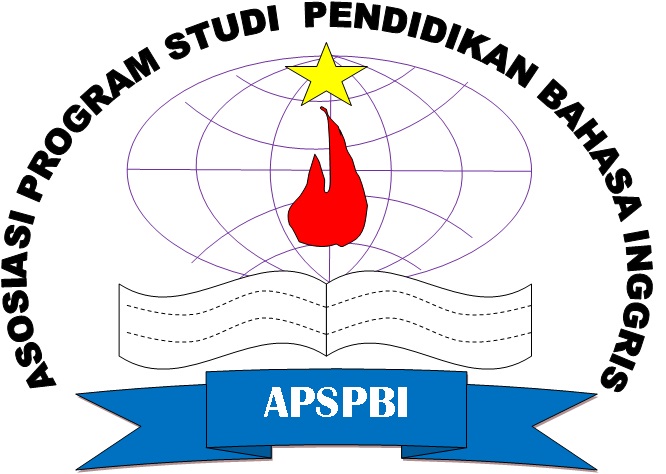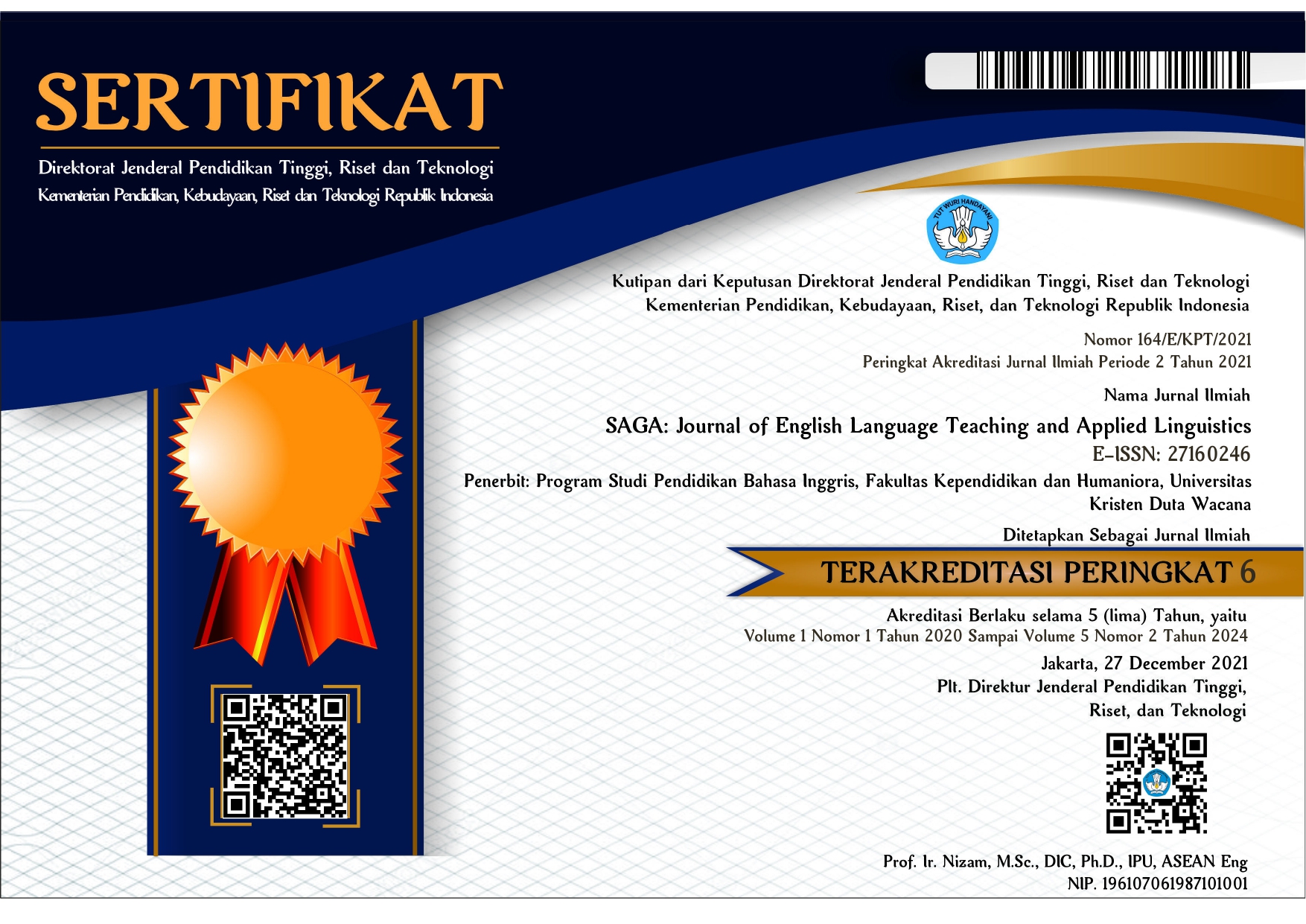Applying Community of Inquiry for Language Learning Among English Preservice Teachers
DOI:
https://doi.org/10.21460/saga.2022.32.125Keywords:
Community of Inquiry , Language learning, MALL, Preservice TeachersAbstract
Community of Inquiry allows learning activities to run optimally. There are three components in CoI: teaching presence, social presence and cognitive presence. This study aims to investigate the implementation of CoI among English Language Education students in lectures, their opinions, the components of teaching presence, cognitive presence and social presence that arise. The method used in this research is qualitative. Data were collected through observation, Focus Group Discussion and Content Analysis. The results of the study show that CoI can be implemented for lecture activities among English Education students. They argue that CoI provides many benefits for their lecture activities. The components of teaching presence, social presence and cognitive presence appear in learning activities during the implementation of CoI.
References
Afrianto. (2018). Being a professional teacher in the era of industrial revolution 4.0: Opportunities, challenges, and strategies for innovative classroom practices. English Language Teaching and Research, 2(1), 1–13.
Butler, D. L., & Schnellert, L. (2012). Collaborative inquiry in teacher professional development. Teaching and Teacher Education. https://doi.org/10.1016/j.tate.2012.07.009
Galikyan, I., & Admiraal, W. (2019). Students’ engagement in asynchronous online discussion: The relationship between cognitive presence, learner prominence, and academic performance. The Internet and Higher Education, 10(6). https://doi.org/10.1016/j.iheduc.2019.100692
Garrison, D. R., Cleveland-Innes, M., & Fung, T. S. (2010). Exploring causal relationships among teaching, cognitive, and social presence: Student perceptions of the community of inquiry framework. The Internet and Higher Education, 13(1–2), 31–36. https://doi.org/10.1016/j.iheduc.2009.10.002
Garrison, D. Randy, Anderson, T., & Archer, W. (1999). Critical inquiry in a text-based environment: computer conferencing in higher education. The Internet and Higher Education, 2(3), 87–105. https://doi.org/10.1016/S1096-7516(00)00016-6
Garrison, D. Randy, Anderson, T., & Archer, W. (2010). The first decade of the community of inquiry framework: A retrospective. The Internet and Higher Education, 13(1), 5–9. https://doi.org/10.1016/j.iheduc.2009.10.003
Kukulska-Hulme, A., & Shield, L. (2008). An overview of mobile assisted language learning: From content delivery to supported collaboration and interaction. ReCALL, 20(03), 271–289. https://doi.org/10.1017/S0958344008000335
Kumar, S., & Ritzhaupt, A. D. (2014). Adapting the community of inquiry survey for an online graduate program: Implications for online programs. E-Learning and Digital Media, 11(1), 59–71. https://doi.org/10.2304/elea.2014.11.1.59
Laforune, A. M. (2019). Differences in students’ perceptions of the community of inquiry in a blended synchronous delivery mode. Canadian Journal of Learning and Technology, 45(3).
Rubin, B., Fernandes, R., & Avgerinou, M. D. (2013). The effects of technology on the community of inquiry and satisfaction with online courses. The Internet and Higher Education, 17(1), 48–57. https://doi.org/10.1016/j.iheduc.2012.09.006
Shea, P., & Bidjerano, T. (2010). Learning presence: Towards a theory of self-efficacy, self-regulation, and the development of a communities of inquiry in online and blended learning environments. Computers and Education. https://doi.org/10.1016/j.compedu.2010.07.017
Shea, P., & Bidjerano, T. (2012). Learning presence as a moderator in the community of inquiry framework. Computers and Education, 59, 316–326. https://doi.org/10.1016/j.compedu.2012.01.011
Shea, P., Hayes, S., Smith, S. U., Vickers, J., Bidjerano, T., Pickett, A., Gozza-Cohen, M., Wilde, J., & Jian, S. (2012). Learning presence: Additional research on a new conceptual element within the community of inquiry (CoI) framework. The Internet and Higher Education, 15(2), 89–95. https://doi.org/10.1016/j.iheduc.2011.08.002
Wicks, D. A., Craft, B. B., Mason, G. N., Gritter, K., & Bolding, K. (2015). An investigation into the community of inquiry of blended classrooms by a faculty learning community. The Internet and Higher Education, 25(1), 53–62. https://doi.org/10.1016/j.iheduc.2014.12.001
Yu, J. H., Kim, W., Yu, T., Richardson, J. C., & Lafayette, W. (2011). Community of inquiry in an education-based social network site: An exploratory study [Paper presentation]. 34th AECT Annual Conference. http://www.aect.org/pdf/proceedings11/2011/11_37.pdf
Yudhiantara, R. A. & Nasir. (2017). Toward mobile-assisted language learning: Reaping mobile phone benefits in classroom activities. Register Journal, 10(1), 12–28. https://doi.org/DOI: http://dx.doi.org/10.18326/rgt.v10i1.12-28
Yudhiantara, R. A., & Nuryantini, A. Y. (2019a). Instagram-assisted language learning in Islamic higher education: Toward online collaboration. JEELS (Journal of English Education and Linguistics Studies). https://doi.org/10.30762/jeels.v5i2.738
Yudhiantara, R. A., & Nuryantini, A. Y. (2019b). Promoting mobile collaborative language learning in Islamic higher education. Journal on English as a Foreign Language, 9(1), 87. https://doi.org/10.23971/jefl.v9i1.961
Yudhiantara, R. A., & Nuryantini, A. Y. (2019c). Promoting mobile collaborative language learning in Islamic higher education. Journal on English as a Foreign Language. https://doi.org/10.23971/jefl.v9i1.961
















